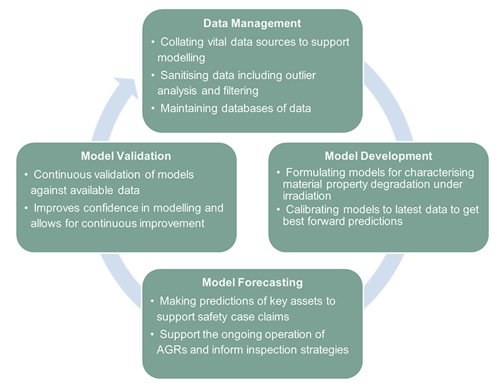-
Client
UK advanced gas-cooled reactor (AGR) power stations
-
Business need
To support the low-carbon generation of electricity, AGRs must have their current lives extended, which relies on a strong understanding of the graphite moderator
-
Why Frazer-Nash?
Frazer-Nash has a long successful history of modelling and predicting graphite weight loss and cracking.
Background
The UK’s nuclear power fleet of advanced gas cooled reactors (AGRs) are coming to the end of their generation lives. The end of generation dates have already been extended beyond their original designed dates and there is a requirement to ensure the ongoing safety of the reactors.
One of the main life limiting factors of the AGRs are the graphite reactor cores and their structural integrity after many years of high temperature irradiation and radiolytic oxidation. Understanding the degradation of graphite through life and forecasting into the future is vital for the ongoing operation of these reactors.
Our approach
Frazer-Nash has a long successful history in understanding and supporting the ongoing operations of graphite reactors in the UK. Previously supporting MAGNOX, we utilised knowledge of graphite material science to support the AGRs in numerous ways including:
- Graphite data collation and management
- Model development and calibration
- Making forecasts of graphite brick behaviour
- Continuously validating models against latest data.
Employing this cycle of model development and deployment, we were able to provide lasting support to the AGRs, continually improving the understanding of the reactor core and ensuring safe operation. This included supporting the development of safety justifications and engagement with the regulator, the ONR. We have an in-depth knowledge of the degradation of graphite under high temperature irradiation conditions and are able to make predictions of assets to extend their design life.
We employed our knowledge of graphite with a model development and deployment cycle to support and extend the operation of the ageing UK AGR fleet.


